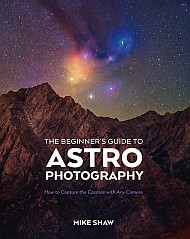Astronomy
European Space Agency launches competition to find its next commercial rocket by 2028
1st-ever orbital rocket launch from European soil falls to Earth and explodes seconds into flight
SpaceX's Fram2 astronaut flight over Earth's poles will be the 1st to grow mushrooms in space
Are Nuclear Propulsion Systems the Future of Space Exploration?
Efforts are underway to develop advanced propulsion systems that can reduce transit times to Mars and other locations in the Solar System. These include nuclear propulsion concepts, which NASA began researching again in 2016 for its proposed "Moon to Mars" mission architecture. In a recent paper, two aerospace innovators reviewed some key nuclear-electric propulsion concepts, their respective advantages, and challenges. In the end, they conclude that nuclear propulsion has the potential to revolutionize space exploration and make humanity "multiplanetary."
How To Power CubeSats Using Deep Learning
Deciding how to power a CubeSat is one of the greatest challenges when designing a modular spacecraft. Tradeoffs in solar panel size, battery size, and power consumption levels are all key considerations when selecting parts and mission architecture. To help with those design choices, a paper from researchers in Ethiopia and Korea describes a new machine-learning algorithm that helps CubeSat designers optimize their power consumption, ensuring these little satellites have a better chance of fulfilling their purpose.
This Week In Space podcast: Episode 154 — The View From On High
Partial solar eclipse delights skywatchers around the world (photos)
X-rays, mushrooms and more: The science riding on SpaceX's Fram2 astronaut mission around Earth's poles
A total solar eclipse from 2471 B.C. may have shaken Egypt's cult of the sun
NASA's New Dust Repelling Shield Seems to Work Well
The hazards facing lunar astronauts are many. There's the radiation, the temperature extremes, the psychological challenges associated with isolation, and the risk of important equipment breaking down. But there's also the dust, which constitutes an ever-present background hazard.
Are Trump's cuts to science the end of the endless frontier?
Are Trump's cuts to science the end of the endless frontier?
Doom games in order: Chronological and release date
Measles is spreading across the US – here is what you need to know
Measles is spreading across the US – here is what you need to know
COVID Research Funding to Be Slashed, NIH Documents Show
Studies on COVID, climate change and South Africa are on the latest list of terminated grants by the U.S. National Institutes of Health, according to updated documents obtained by Nature
'Chappie' is 10 years old, and Blomkamp's flawed humanist take on robots and AI is more relevant than ever
Its Mission Over, Gaia Rides Off Into the Sunset
No matter where on Earth you stand, if you have a view of the night sky, and if it is dark enough, you can see the Milky Way. The Milky Way is our home, and its faint clouds of light and shadow have inspired human cultures across the globe. And yet, our view of the Milky Way is limited by our perspective. In many ways, we have learned more from other galaxies than from our own. But when the Gaia spacecraft launched in 2013, all of that changed.


